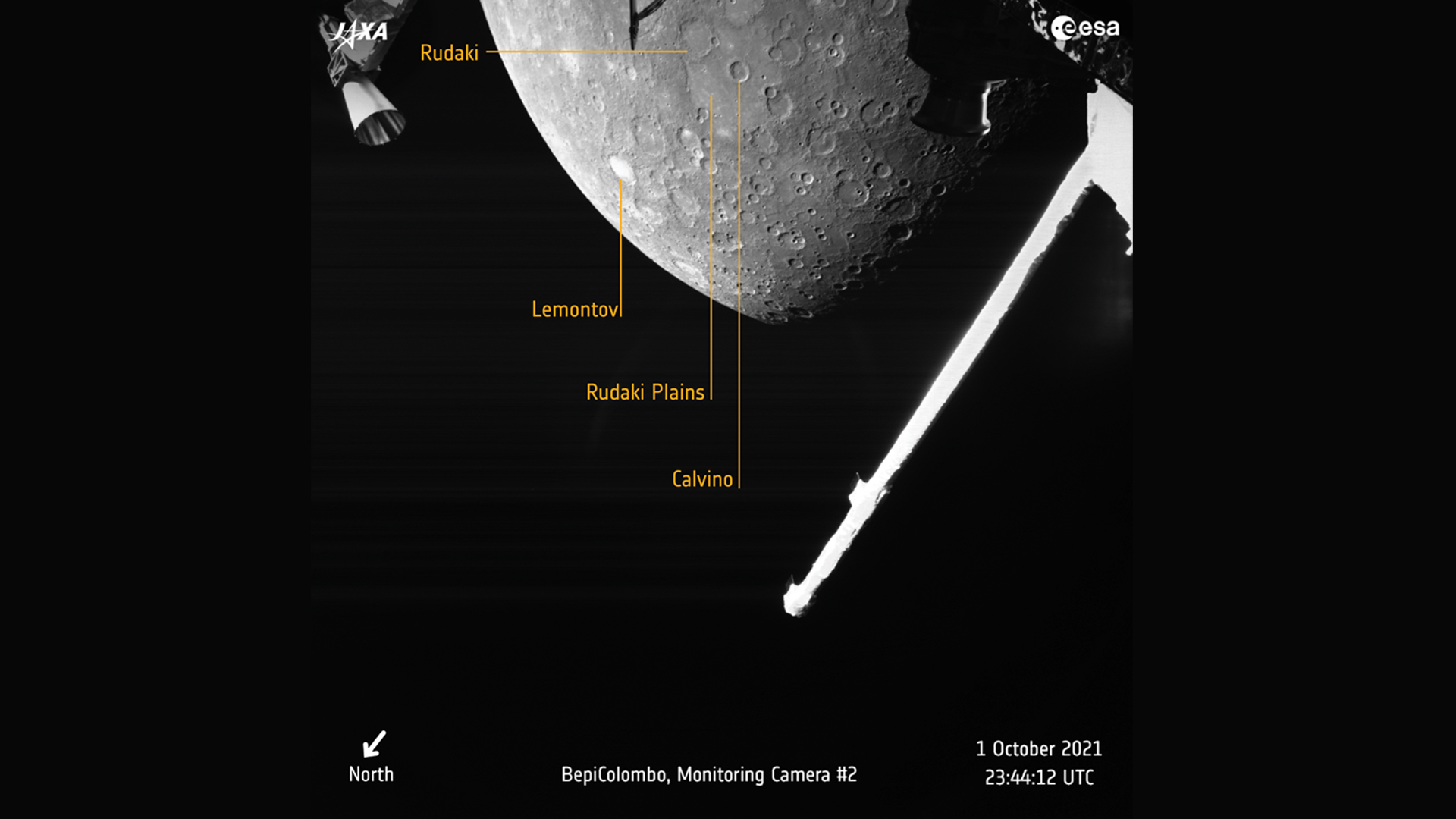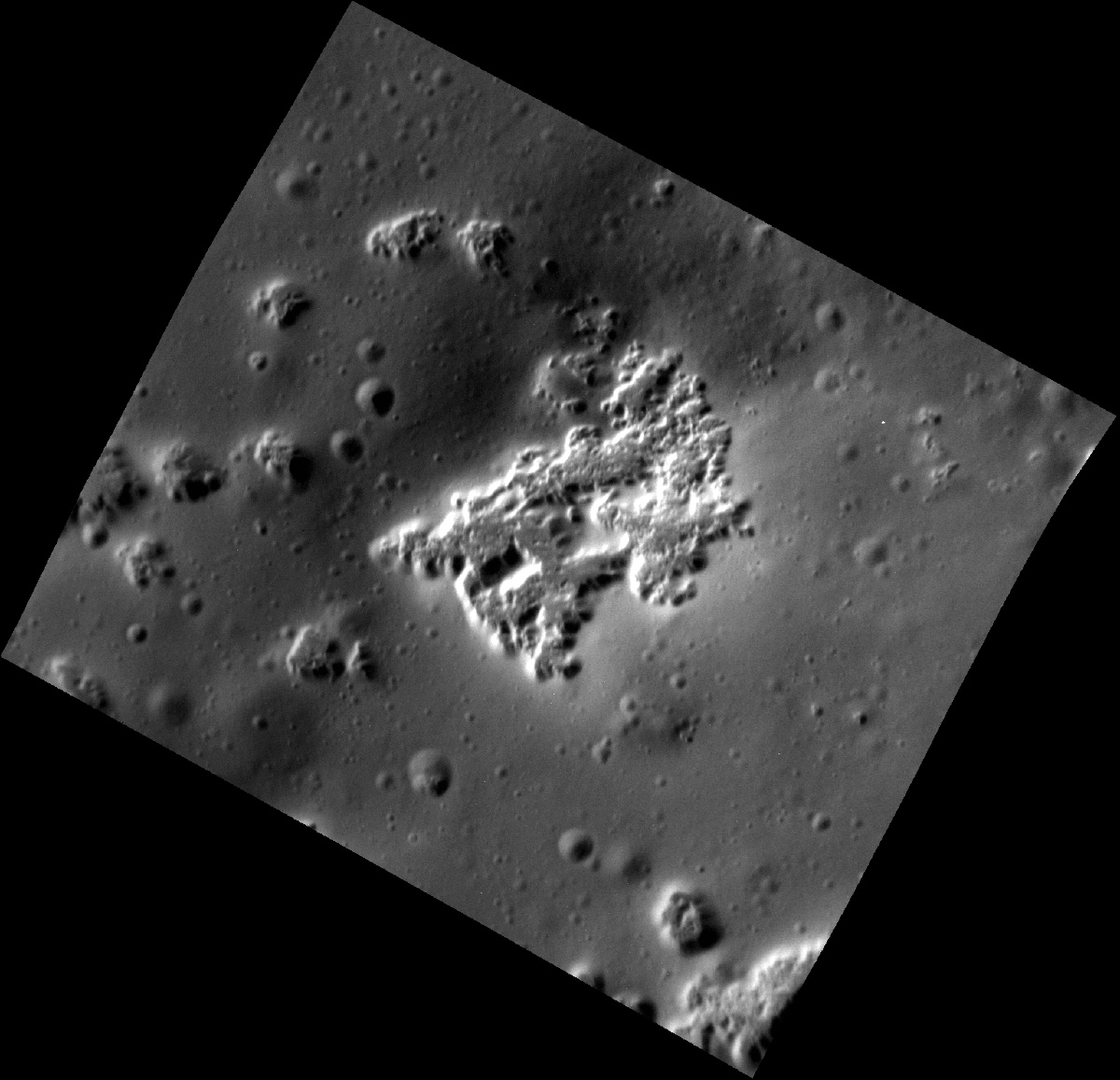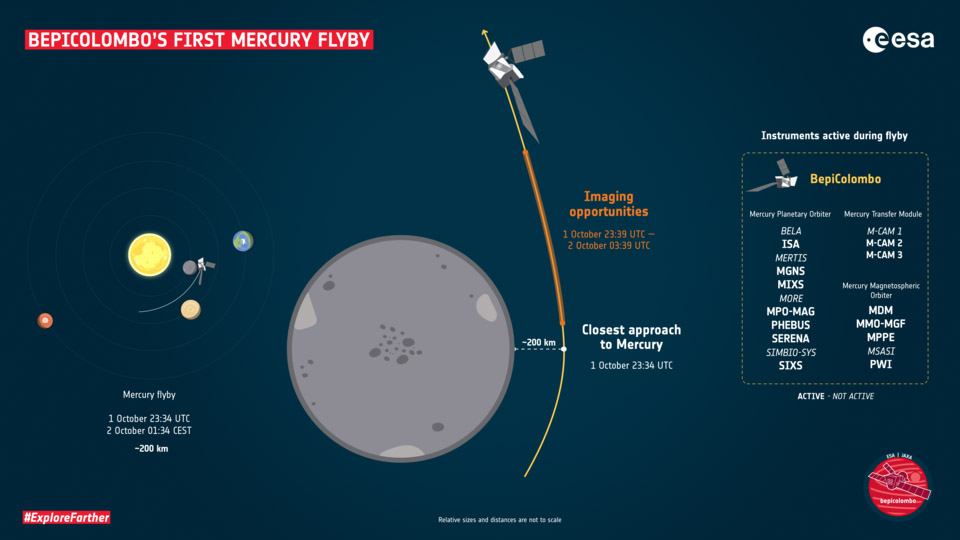Fly by Mercury with this stunning new video from the BepiColombo spacecraft
See the view from just 620 miles above Mercury!
The European and Japanese BepiColombo spacecraft made the closest ever measurements of the magnetic field of Mercury above the planet's southern hemisphere as it zoomed past, snapping epic selfies along the way.
European Space Agency (ESA) and Japan Aerospace Exploration Agency (JAXA) scientists are still processing the data that will present the first tiny contribution of the BepiColombo mission to the unravelling of the mysteries of the smallest and innermost planet of the solar system.
The flyby, conducted on Friday (Oct.1), was designed to slow down BepiColombo in its orbit around the sun using Mercury's gravity. Five more such flybys will be necessary before the spacecraft can finally enter orbit around the planet in 2025.
During the flyby, three monitoring cameras on the spacecraft's transfer module photographed the planet, with the results released as a short video on Monday (Oct. 4). This sequence of 53 images taken from distances of 620 to 57,800 miles (1,000 to 93,000 kilometers) represents BepiColombo's first glimpse of its target planet.
Related: Mercury may not have shrunk nearly as much as scientists think

During the flyby, BepiColombo approached Mercury's surface to a distance of 120 miles (200 km), which is closer than its ultimate scientific orbit around the planet of 300 to 930 miles (480 to 1,500 km). The closest approach, however, happened on the night side and couldn't be captured by the cameras, ESA BepiColombo project scientist Johannes Benkhoff told Space.com.
"For us, it was of course fantastic to see our planet for the first time," Benkhoff said. "We have our target now in focus and we will use what we have done during this flyby to finetune our settings to get even better results during the future flybys."
Get the Space.com Newsletter
Breaking space news, the latest updates on rocket launches, skywatching events and more!
BepiColombo consists of two orbiters that will circle Mercury separately — the ESA-made Mercury Planetary Orbiter (MPO) and JAXA's Mercury Magnetospheric Orbiter (MMO) — which are traveling to Mercury stacked atop a transfer module. This configuration, however, blocks some of the mission's instruments, including the high-resolution cameras on MPO, limiting the science possible during flybys.
The black and white 'selfie' cameras used during this flyby were originally intended to monitor the deployment of the spacecraft's solar panels after launch in 2018. These cameras provide images with a modest 1024 x 1024 pixel resolution (comparable to an early 2000s flip phone), which, Benkhoff said, still reveal some of the interesting features on Mercury's surface.
"The resolution of our monitoring cameras is not as good as that of the scientific cameras that we have on board so we were happy that we could identify some features on the surface," Benkhoff said. "We can see color differences, we can see bright features that indicate younger material, for example the Lermontov crater with hollows in it."
Hollows are small dents in Mercury's surface discovered by NASA's Messenger mission, the first and so far only mission to have orbited Mercury, which it did from 2011 to 2015.These hollows appear young, according to the scientists, and might be an indication of material evaporating from within the planet. The BepiColombo team hopes to pick up where Messenger left off and compare images of the hollows obtained by the two spacecraft. That task, however, must wait for images from the high-resolution cameras, Benkhoff said.
Nonetheless, data from the Oct. 1 flyby can still contribute new information to the scientific understanding of Mercury.

"Messenger followed an elliptical orbit, which took it very close to Mercury's surface in the northern hemisphere," Benkhoff said. "With this flyby, we were close to the surface in areas that Messenger was always far away from."
The scientists are now looking at data from BepiColombo's magnetometer, which might reveal new information about the planet's weak magnetic field. Mercury's magnetic field was a surprise discovery made by NASA's Mariner 10 spacecraft, which performed three Mercury flybys in the 1970s and obtained the first-ever up-close images of the planet.
Scientists didn't expect Mercury to have a magnetic field at all due to the planet's small size. Out of the four rocky planets of the inner solar system, only Earth has a strong magnetic field, which protects it against cosmic radiation and bombardment by cosmic particles. Mars likely had a magnetic field in the past but lost it at some point, causing the planet to lose its atmosphere.
Instead, not only does Mercury have a magnetic field, but it's a weird one too. "The Messenger spacecraft subsequently found that the magnetic field of Mercury is shifted to the north by 20% of the planet's radius," Benkhoff said. "As we probe the south, we might be able to confirm this shift or see that it might be shifted somewhat less."
The BepiColombo scientists also hope to measure the magnetization of Mercury's parched crust and see how it interacts with the main magnetic field.

The flyby provided the first opportunity to test the spacecraft's performance in the harsh conditions around Mercury that the two orbiters will have to withstand during their planned year-and-a-half-long missions. (MPO is expected to endure temperatures of up to 840 degrees Fahrenheit, or 450 degrees Celsius, during its mission, which is hot enough to melt lead.) Because of this high temperature, some instruments that can otherwise be operated in the cruise configuration were not allowed to take measurements as operators were concerned about the heat impact.
"The experience from this flyby will give us more operational security for the following five Mercury flybys that we have to perform before we can finally enter orbit around Mercury," Benkhoff said. "We hope that as we get a better understanding of the temperatures around the spacecraft, we might be able to operate more instruments during the future flybys."
BepiColombo's next encounter with Mercury will take place in June 2022 at a similar distance as the recent one. Four additional flybys will occur in June 2023, September 2024, December 2024 and January 2025.
Mercury is notoriously difficult to reach. Although the moon-size planet is on average 10 times closer to Earth than Jupiter is, a mission aiming for the tiny world's orbit requires about the same cruise time as one aiming for the gas giant. That's because a mission to Mercury needs to constantly brake against the gravitational pull of the sun. This braking could theoretically be achieved with thrusters, but that operation would require an enormous amount of fuel. Instead, the spacecraft takes a long and circuitous route taking advantage of the gravity of celestial bodies along the way to shed some energy and reach its target at a correct speed.
BepiColombo previously performed one flyby at Earth in April 2020 and two at Venus in October 2020 and August 2021.
Follow Tereza Pultarova on Twitter @TerezaPultarova. Follow us on Twitter @Spacedotcom and on Facebook.
Join our Space Forums to keep talking space on the latest missions, night sky and more! And if you have a news tip, correction or comment, let us know at: community@space.com.

Tereza is a London-based science and technology journalist, aspiring fiction writer and amateur gymnast. Originally from Prague, the Czech Republic, she spent the first seven years of her career working as a reporter, script-writer and presenter for various TV programmes of the Czech Public Service Television. She later took a career break to pursue further education and added a Master's in Science from the International Space University, France, to her Bachelor's in Journalism and Master's in Cultural Anthropology from Prague's Charles University. She worked as a reporter at the Engineering and Technology magazine, freelanced for a range of publications including Live Science, Space.com, Professional Engineering, Via Satellite and Space News and served as a maternity cover science editor at the European Space Agency.
